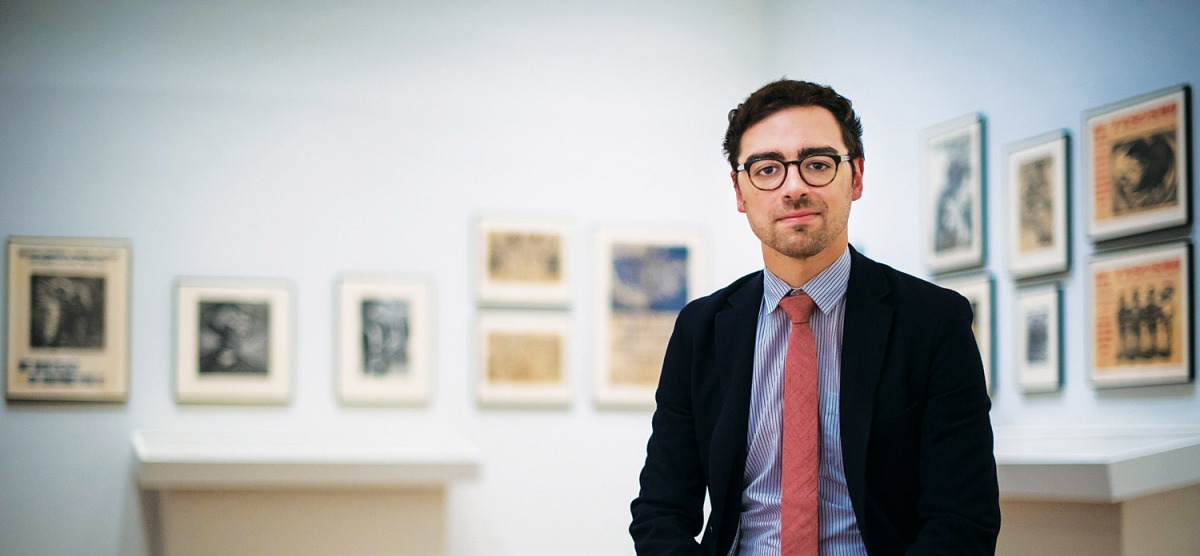
Stories of Art and Revolution
Ph.D. candidate tells the story of Mexican modernism in age of civil war.
Storytelling is often on the mind of Mark Castro, M.A. ’10. candidate in history of art and project assistant curator at the Philadelphia Museum of Art.
Says Castro, “Professor Steven Levine once said in class, ‘Art history is people trying to tell a convincing story. It tells us as much about the art historian as it does about the works.’ That idea stuck with me as I was co-curating Paint the Revolution. I kept asking myself, How do I tell a convincing story? How much of me is in this exhibition?
Paint the Revolution: Mexican Modernism 1910–1950, a recent exhibition at the PMA, told the story of how artists took part in both provoking change and rebuilding national identity during the Mexican Revolution and after the conflict’s end in 1920.
Covering 40 years of art and comprising 280 objects by 70 artists, Paint the Revolution took four years to plan. “It was an incredible collaboration,” says Castro, “between myself; Matthew Affron, the PMA’s modern painting curator; and two curators working for the Palace of Fine Arts in Mexico City.”
The team traveled frequently together to select pieces from museum collections and from private collections as well. “One of my favorite parts of the process,” says Castro, “was visiting amazing private collections in Mexico City, the kind of places where masterpieces hang on every wall.
“In developing the exhibition, there were so many pieces to choose from,” continues Castro. “We spent a lot of time thinking about what had already been done with this topic and what stories we wanted to tell. We also had to be honest with ourselves about why we were selecting certain objects. Did they fit the story of the exhibition, or were they simply the works that were familiar to us from past exhibits?”
What role can art play after a traumatic event? Does art have a purpose beyond its display in a home or museum? Should artists be provoking political and social change
Castro’s favorite piece is the Portrait of María Izquierdo by Rufino Tamayo. “I love that this painting captures the close partnership and friendship between two artists, Izquierdo and Tamayo, and represents the communities of artists and writers that formed after the revolution.”
Paint the Revolution explored what happened culturally in Mexico in the early 20th century, but for Castro, bigger questions also emerge.
What role can art play after a traumatic event? Does art have a purpose beyond its display in a home or museum? Should artists be provoking political and social change?
The exhibition closed in January, so what’s next for Castro?
“I plan to finish my dissertation and continue my work at the PMA,” says Castro. “I’m hoping to work with our pre-Colombian collection and, perhaps, expand on a gallery installation I did of the museum’s El Greco paintings. There are many more stories to tell.”
Published on: 03/17/2017
